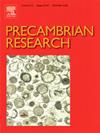Tracking climatic and oceanic redox changes throughout the Neoproterozoic Cryogenian is crucial to a better understanding of the coevolution of life and environment in geological history. However, the processes and driven mechanisms of redox evolution in the Cryogenian interglacial ocean still remain uncertain. Here, we present a combined study of geochemical proxies, such as paleoclimatic proxies (CIA and Zr/Al) and paleosalinity proxies (B/Ga and Sr/Ba), from the interglacial Datangpo Formation in the shallow-water Zuojiawan section exposed in the northwestern Yangtze Block, to constrain climatic and hydrologic changes on redox conditions. Our data indicate that two apparently climatic cycles from warming to cooling occurred during the deposition of the Datangpo Formation, supplementing the monotonous climatic warming in previous research during the Cryogenian interglaciation. The low B/Ga and Sr/Ba ratios throughout Datangpo Formation suggest a continuous freshwater condition, which is in contrast to a transition of marine condition to brackish condition in relatively deep-water sections. Compiled salinity reconstructions at different paleo-depths imply the salinity gradient in the Nanhua Basin with a density stratification like modern Baltic Sea, at least during the early Cryogenian interglacial period. We find that the climate-driven local riverine freshwater input may be a significant driver for maintaining long-term freshwater condition in the Zuojiawan section. Accompanied by synchronously climatic warming, the progressive desalinization with declining B/Ga and Sr/Ba ratios in the middle to upper deposition of the Datangpo Formation are probably attributed to the persistent freshwater input to a nearshore shallow-water paleogeographic setting. Combined the improving oceanic oxygenation backdrop with the elevating seawater sulfate concentration in the Nanhua Basin in this period, we conclude that the continuous dilution of seawater in the restrict (semi-) Nanhua Basin could attenuate the density stratification and enhance the vertical mixing of watermass, favoring the ventilation of deepwater and penetration of sulfate. This contribution provides a new insight for the study of salinity changes on redox conditions in the Yangtze Block during the Cryogenian interglacial period, and provides new data for supporting a systematic understanding of the evolutional mechanism of oceanic redox state.


